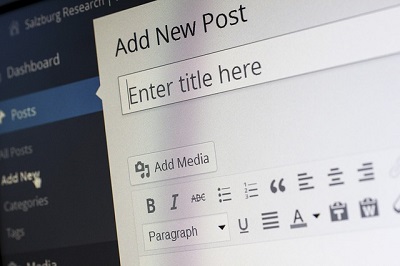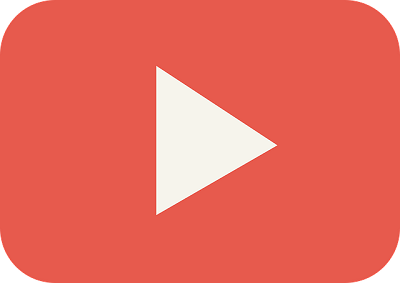Writing Content to Suit the Buyer's Journey: Awareness Stage
One of the most important things to keep in mind when creating content is how your customer will relate to it.
Will they enjoy it?
Will they learn from it?
Will they find it boring?
Will they share it?
Making sure your customer relates to your content enough to read/watch to the end, to go on to read/watch more, and to eventually buy, is easier said than done. After all, not all customers are created equal. Some are closer to purchasing, while others have only just found out you exist.
This is called the buyer’s journey, and it’s important to tailor your content to each stage of it. Otherwise, your stuff is as good as useless.
So I’ve written this blog post series to help you understand what types of content suit the different stages of this journey and make sure you’re creating relevant and engaging pieces to ease your customers towards purchasing.
First things first, what is the buyer’s journey?
The buyer’s journey is the process a (potential) lead goes through before making a purchase.
In general, it’s made up of three sections: Awareness, Consideration/Research, and Decision.
The Awareness stage is when a person becomes aware that they have a problem. They probably won’t know exactly what it is yet, and they definitely don’t know how to fix it. They may do a bit of research to find out more about the problem and its causes.
The Consideration/Research stage comes when the person has figured out exactly what their problem is and they’re looking into ways to solve it. They will evaluate all of their options, including you and your competitors.
The Decision stage is just as it sounds: the point at which the person decides which solution is best suited to fix their problem.
Why suit your content to each stage?
Think about when you’re browsing in a shop, and the sales assistant keeps coming up and asking you if you need anything or trying to direct you to something. It can be annoying, especially if you’re not looking for anything in particular. You just want to be left alone to figure it out yourself.
It’s the same with content.
People don’t want to read content that’s pushing them towards a sale when they’ve only just started browsing.
People at each stage of the journey are looking for different things, and that means you have to create content to suit each thing they’re looking for.
There’s no point in writing up a case study showing how your product helped a previous customer and sending it to someone in the Awareness stage as they don’t know what their problem is, never mind why they should choose you to fix it.
It’s also pointless to send a short how-to blog post to someone in the Decision stage who knows exactly what they want and is trying to decide which company to get it from. It’s not useful as they already have that information.
Each piece of content you write should work to usher users towards a purchase gently instead of pushing them to buy when they’re not ready, or giving them unnecessary information that they already have.
What type of content should you write for each stage?
For this post, I’ll be focusing on the Awareness stage of the buyer’s journey, and the types of content that suit prospects who are only becoming aware of their problem. They have yet to define what the problem is, they just know something’s wrong.
Your job at this stage of their journey is to make them aware of the causes of their problem and get them thinking about possible solutions. You don’t want to talk about your product or service too much at this stage. It’s an informative stage rather than a sales opportunity.
You do want to create some brand awareness and trust, however, and show the prospect that you are a valuable and credible source of information, and your content will go a long way to doing that.
Blog Posts
Blog posts are the easiest and most common form of content created for the Awareness stage. They’re informative and easy to consume and understand.
Your blog post could give tips on how to solve smaller problems and answer questions the prospect may have. Think about the kinds of questions your current customers ask or the search terms that brought them to you initially to help you come up with blog post topics.
They’re a great way to show your expertise in your industry, which creates trust and keeps you in the prospect’s mind for when they get to the next stage.
Try to include links to other posts of a similar topic in your blogs to keep the prospect reading your content and help them see you as knowledgeable.
Videos
There’s no arguing that video is a popular form of content. 68% of consumers say they would prefer to find out about new products through videos rather than blogs, ebooks or infographics.
Like blog posts, videos are a great way to show solutions for small problems. They can be easier to consume than blog posts as they’re quicker and require less effort than reading a lot of text.
A how-to video is one of the best ways to inform your prospect while showing that you know what you’re talking about. It’s the ‘show-don’t-tell’ rule in action. A prospect is likely to learn easier from seeing exactly what they have to do, rather than reading it in text form.
The Body Coach’s Lean in 15 Instagram videos are a great example of how to use videos in the Awareness stage.
Joe Wicks makes 15-second video-recipes, showing exactly what ingredients to use, how to prepare them, and what to do with them. He’s not necessarily selling his products in the videos, he’s merely giving the viewer a simple recipe (i.e. showing that he knows what he’s talking about when it comes to food).
By finishing each video with the phrase ‘that right there is Lean in 15’, he is also creating brand awareness for his Lean in 15 recipe books and workouts, making sure his slogan is fresh in your mind when you move to the next stage.
Infographics
Similar to videos, infographics are a quick and easily consumable way to give your prospect information.
They don’t need to go into a lot of detail; most infographics are a list of facts or statistics that are easily digestible so your prospect can scan it quickly, taking in the information that’s important to them.
One of the benefits of infographics is that people like to share them, which means more people are likely to see them. As more of a visual medium, they do well on social media, especially as large blocks of text can sometimes put people off.
Ebooks
Ebooks, like blog posts, can be an effective way of answering a prospect’s questions and getting useful information to them.
They tend to be longer than blogs, and therefore can be more in-depth than a blog, meaning you can show off more of your expertise.
One of the best things about ebooks is that they’re the perfect way to turn a prospect into a lead. People are likely to hand over their email addresses in exchange for an ebook, and that means you can put them on your list and start easing them to the next stage of the journey with messaging through emails.
Writing content that suits each stage of the buyer’s journey is the best way to gently move your prospects to the next step.
Creating informative blog posts and ebooks, as well as easily shareable videos and infographics means that prospects in the Awareness stage come to see you as an expert and start to trust that you know what you’re talking about.
When they move on to the Consideration/Research stage, you’ll be in their minds as a potential solution to the problem they’ve realised they need to overcome.



